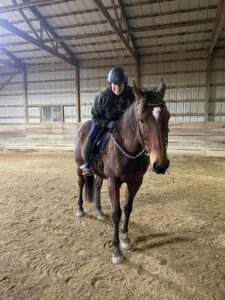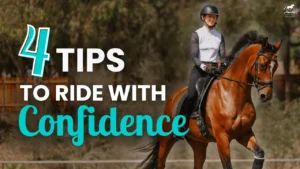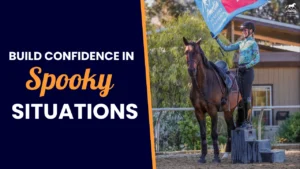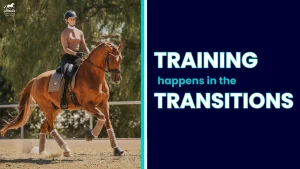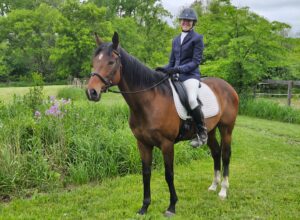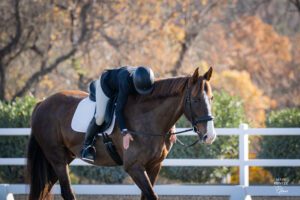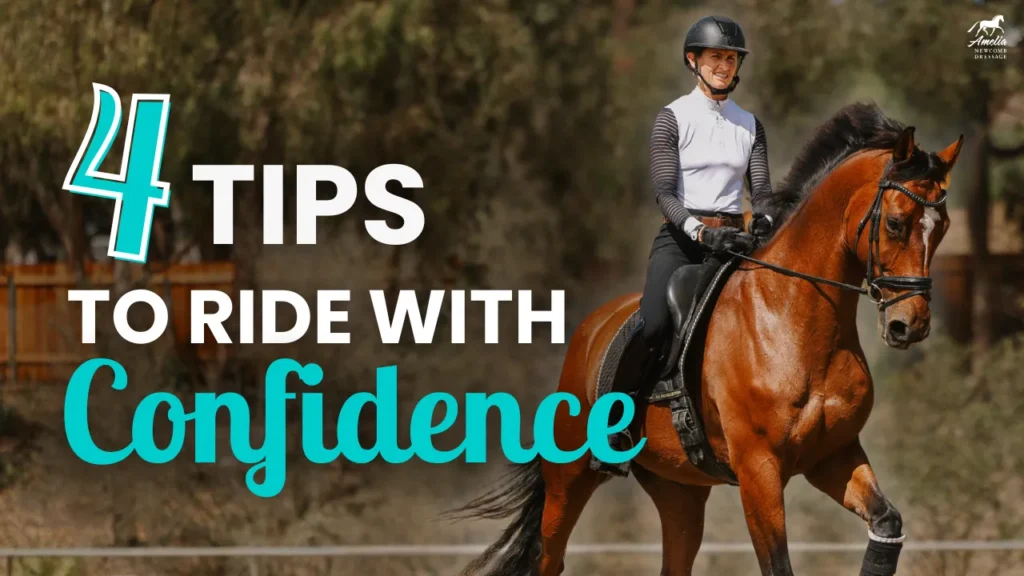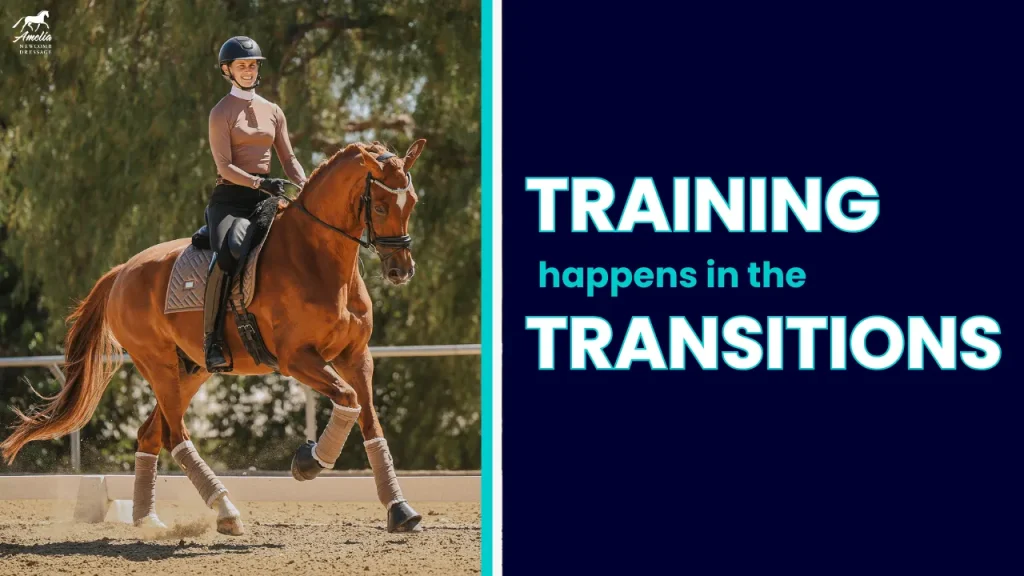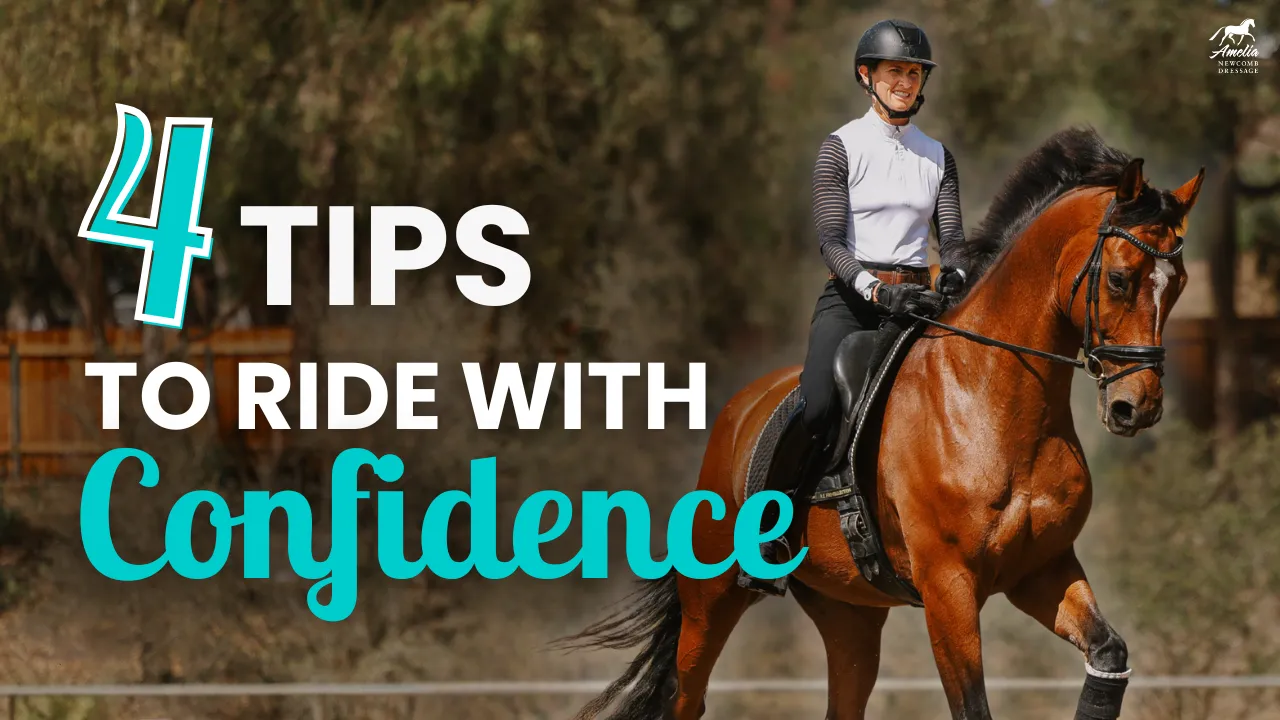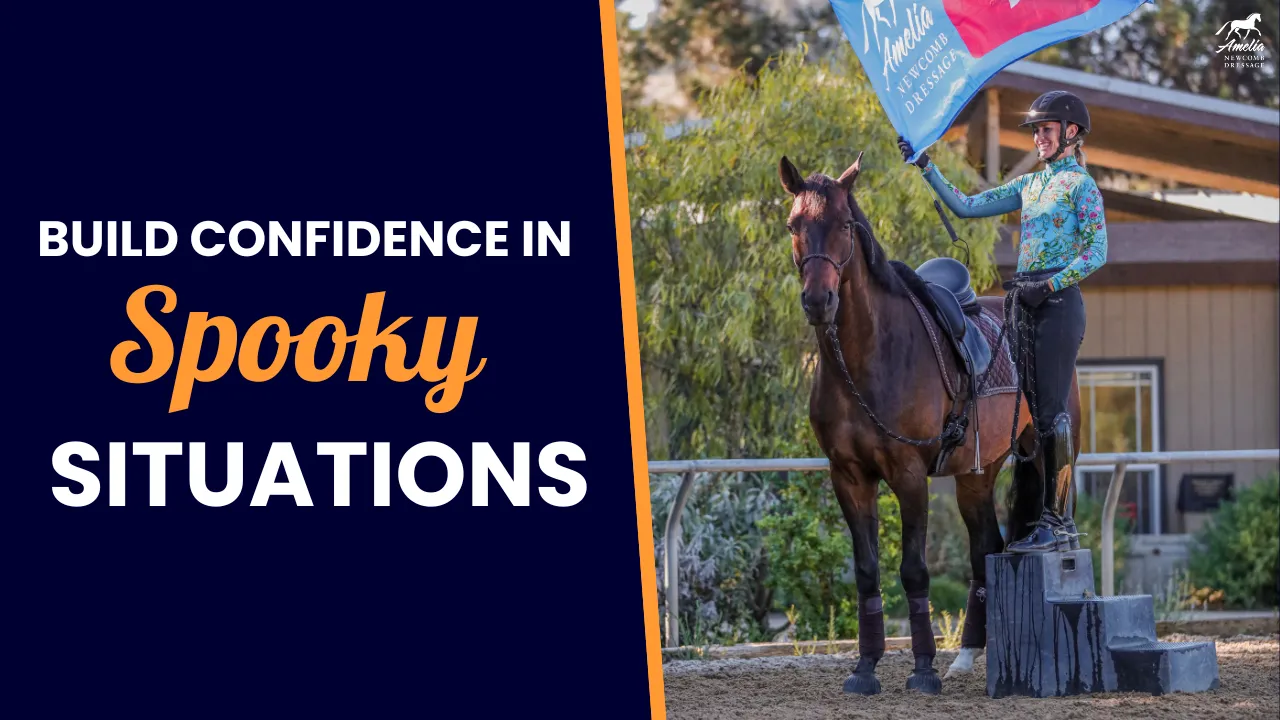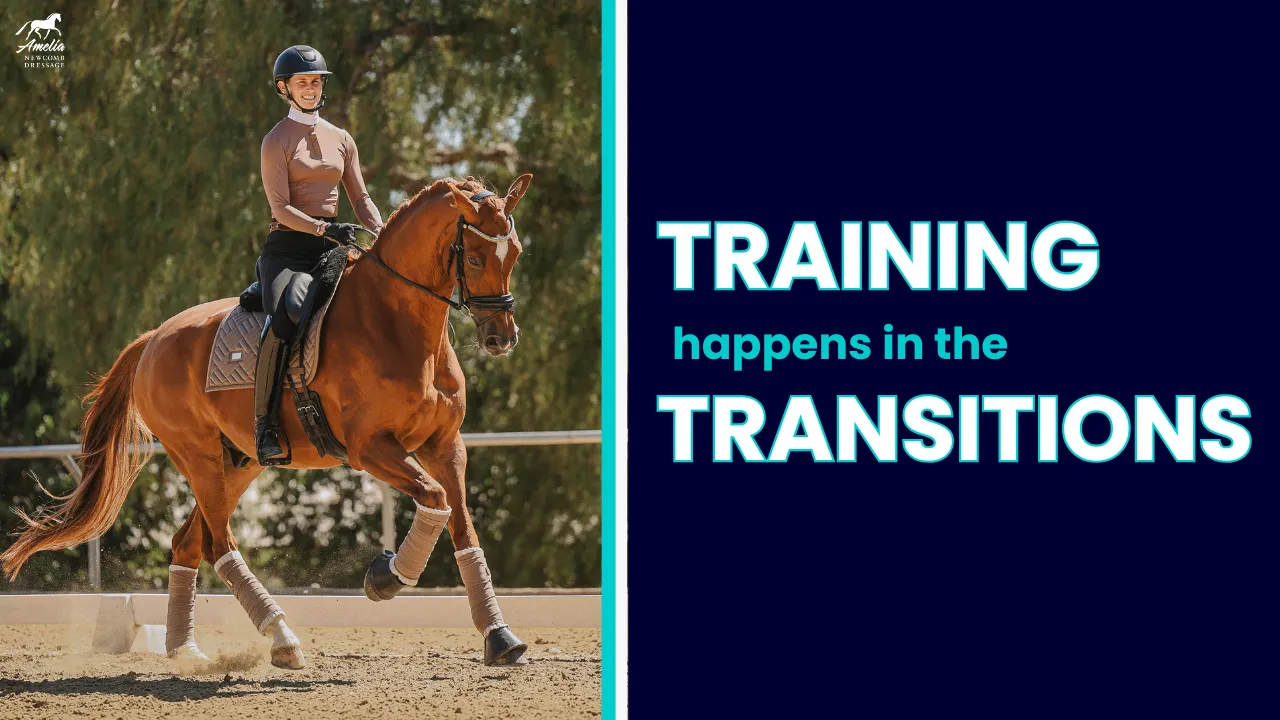In this week’s video, I have one simple trick to help you improve your riding! Regardless of what level you’re riding, if your horse is hot or lazy, if you have trouble turning, if you have terrible transitions, or if you’re unstable in your seat…this will help you!
So what is this special trick? It’s simple: counting the rhythm of your horse’s gaits! Sounds silly, right? I mean, how can counting help improve your riding? Great question. It all goes back to the base of the Training Scale. Rhythm is the first of the six levels of the Training Scale, and you must have this before you can expect your horse to be supple, connected, round, straight, balanced, etc. And rhythm isn’t just something that you work on at the beginning of your training, but all throughout your riding journey. Even top riders have to go back to the basics and re-establish rhythm as they’re training upper-level movements. Counting the rhythm will help you to move with your horse, improve the quality of your horse’s gaits, apply your aids in the correct timing, and more!
Before I get into the tips, I wanted to let you know that my Free Five-Day Riding Bootcamp is now open for enrollment! If you feel like you need a boost in your riding, you just aren’t sure how to make progress, and you need help getting motivated to reach your goals, then this bootcamp is for you! Each day of the bootcamp you will be getting a new training resource to help you improve your riding, and homework to go along with it, plus, you’ll get the chance to win some awesome prizes!
Okay, now back to the tips! Let’s look at each gait and how to count the rhythm to improve your riding! As you’re riding and counting, try to feel each footfall in your seat as you count.
The Walk
The walk has a four-beat rhythm. Start counting with the inside front leg, that is beat one. The outside front is beat three, and the hind legs fall in between those two beats. You can start by counting just the front legs, one three, one three, one three, then try and feel the hind leg footfalls and add in those beats: one, two, three, four. One, two, three, four.
The Trot
The trot has a two-beat rhythm. In this gait, the horse travels in diagonal pairs. You can count the beat like you did with the walk, starting with the inside front as beat one and, the outside front as beat two. So you will count: one two, one two, one two. Even though the hind legs don’t have a separate beat, try and see if you can feel each footfall as you count the rhythm.
The Canter
The canter has a three-beat rhythm:
1. Outside hind
2. Inside hind and outside front
3. Inside front
Start counting with the outside hind, and focus on feeling your seat follow each footfall of the rhythm.
Transitions
Once you have the feel for counting the rhythm of each gait, try counting to help time the aids to transition between gaits. For example, from trot to canter, you want to ask at the correct moment so that your horse can strike off from the trot to the canter on the correct lead. Knowing that the first beat of the canter rhythm is when the outside hind is on the ground, we know that we need to ask for the canter at the same moment in the trot. With our knowledge of the trot rhythm, we know that when the inside front is on the ground, so is the outside hind. So as we’re riding, we can count with the inside front: now, now, now. And then give our aids for the canter transition on the “now” beat. You can also use this same concept when half-halting, transitioning from walk to canter, and more!
As you’re counting the rhythm, also pay attention to the tempo within the rhythm. Remember that tempo is the speed (or pace) at which your horse is traveling, whereas rhythm is the beat of the footfalls. When counting your horse’s rhythm, pay attention to the tempo, and see if it is too fast or too slow. Use your knowledge of the gait to ask your horse to speed up or slow down within the rhythm.
I hope you find these tips helpful. Practice counting during your next ride and I know that you will see a difference!
Happy Riding!
Amelia
P.S. Don’t forget to join my Free Five-Day Riding Bootcamp! In just five days, you will feel motivated and inspired to reach your goals and have a plan to get there! Learn more.
